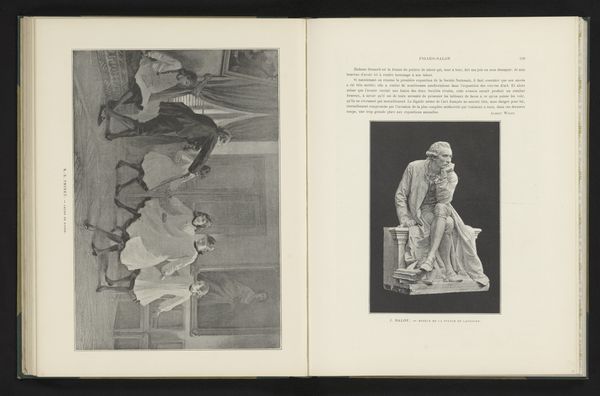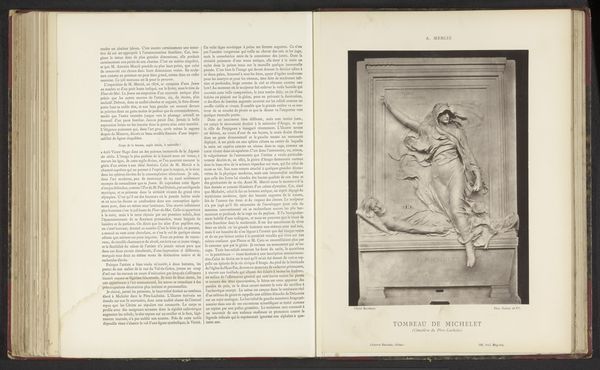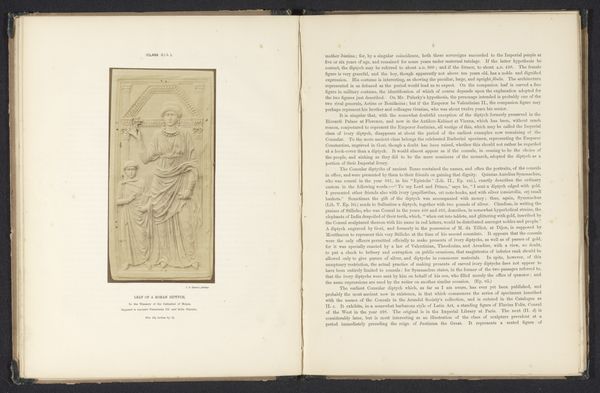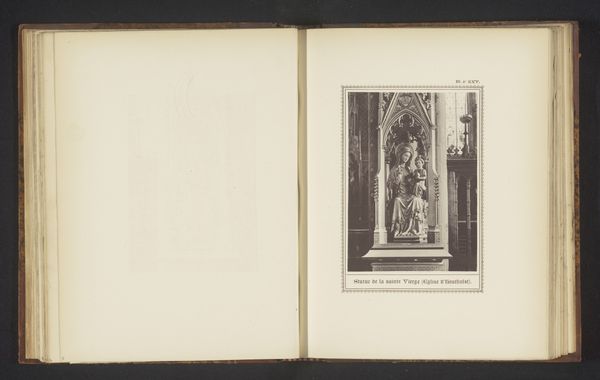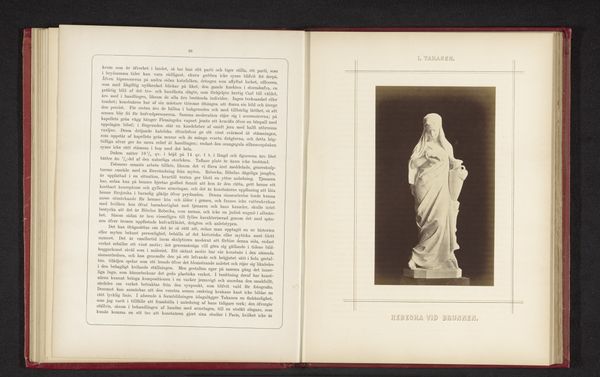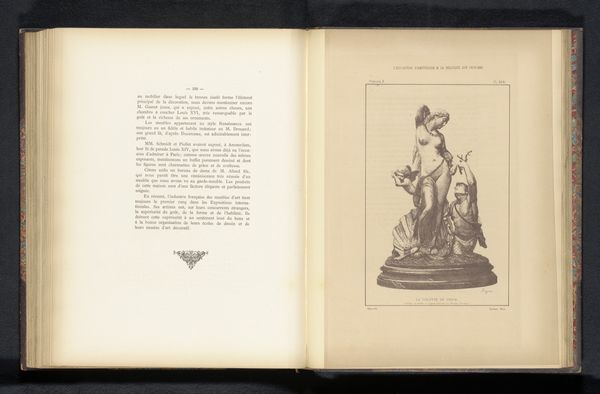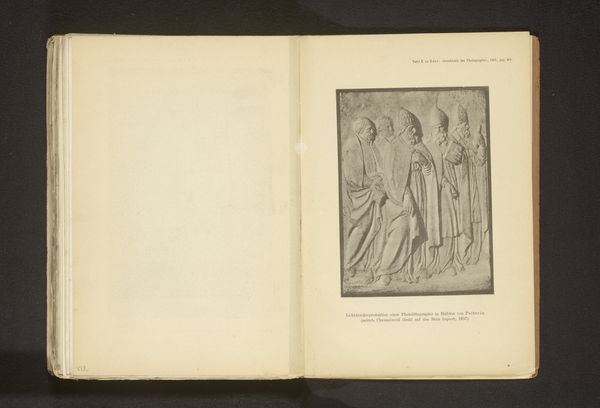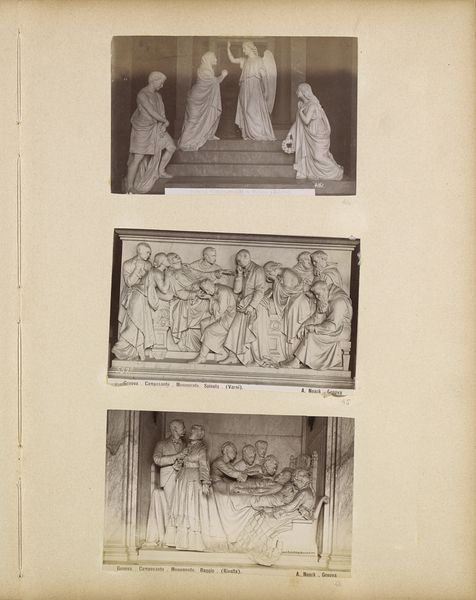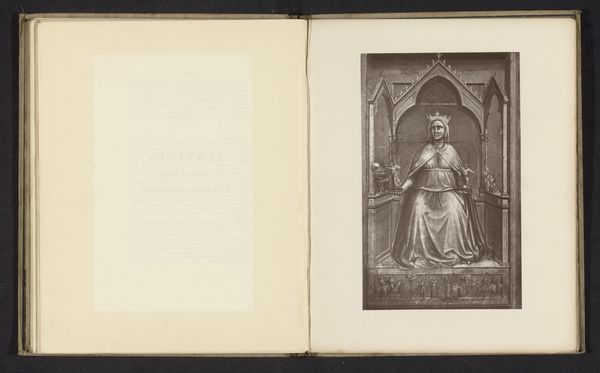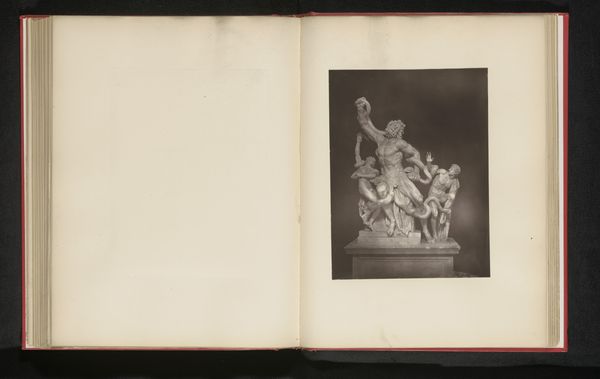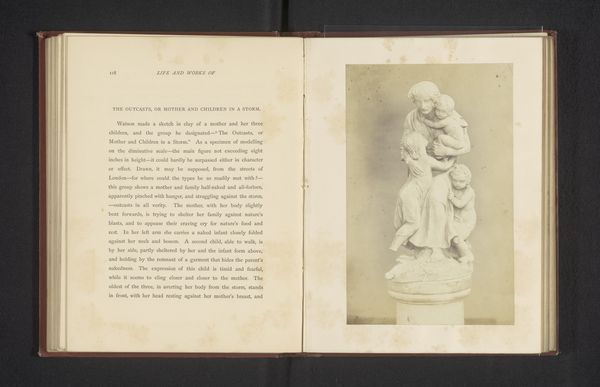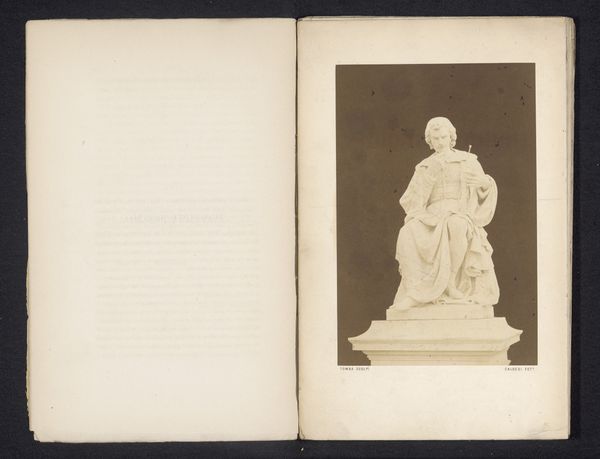
drawing, print, relief, paper, sculpture, pen
#
portrait
#
drawing
#
medieval
#
narrative-art
# print
#
relief
#
figuration
#
paper
#
sculpture
#
line
#
pen work
#
pen
#
history-painting
#
academic-art
Dimensions: height 267 mm, width 191 mm
Copyright: Rijks Museum: Open Domain
Curator: This compelling artwork we're viewing, "La Résurrection," or "The Resurrection," by Alfred-Désiré Lanson, is a pre-1884 piece housed right here at the Rijksmuseum. It appears to be a print, possibly after a sculpture or relief. What’s your initial response to it? Editor: It strikes me as dramatically staged, like something between a theatrical set piece and a devotional icon. I'm curious about the way it pulls the eye upwards, even if the figures themselves seem caught in this perpetual state of anguish and… triumph? Curator: Well, Lanson was working within the late 19th-century academic art tradition, steeped in history painting and religious narrative. Notice how the figures are rendered with almost sculptural precision, each muscle meticulously defined, each gesture calibrated for maximum emotional impact. Editor: I see it, though that heightened drama feels performative, almost manufactured. Are we meant to find solace or inspiration here, or is it about showcasing skill and adhering to the formal demands of the period? Also, the very public, almost didactic tone seems geared to reinforce specific religious views. How might the socio-political dynamics shape interpretations of pieces like this? Curator: Absolutely. The context is critical. This was an era of immense social and political change, where the Church was battling to retain influence. An image like "The Resurrection" becomes part of that broader ideological struggle, offering a very particular vision of hope and salvation rooted in tradition. The imagery would not be neutral at all. It would have been powerful for supporters of the time. Editor: It’s that tension, then, between the artwork's intrinsic qualities—the artist's talent, the mastery of the craft—and its role in these wider power dynamics, which fascinates me. Art doesn't exist in a vacuum, of course, but often art history seems to only engage the one, at the expense of the other. Curator: That is, indeed, what makes studying artworks from different periods a truly worthy endeavor, for, ultimately, it brings us back to our understanding of being human and humane. Editor: Agreed. This sculpture pushes us to see how the hope of art can reinforce different political and ideological forces. It has been an interesting dive into “The Resurrection” together.
Comments
No comments
Be the first to comment and join the conversation on the ultimate creative platform.
